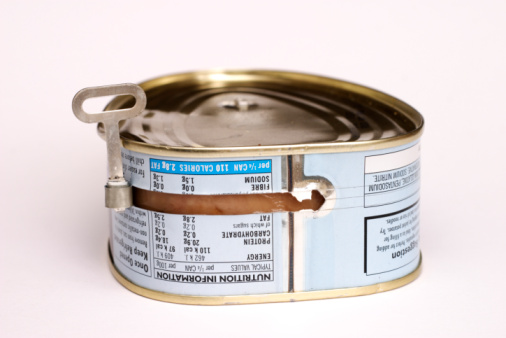 It seems so simple. Type 140 characters, post, and your message is in front of a potential audience in the hundreds of millions on Twitter.
It seems so simple. Type 140 characters, post, and your message is in front of a potential audience in the hundreds of millions on Twitter.
Yet many – probably most – credit unions and other financial institutions continue to stumble, fumble and make fools of themselves on Twitter and other social media, many experts say.
That's because getting Twitter right – especially in a regulated industry – is harder than it looks.
And then, of course, it's because often credit unions and banks do things that simply are dumb. Even giant Bank of America recently did likewise, so size is not immunity.
Following are five of the best ways to get Twitter absolutely wrong.
Next Page: Followed by Fakes
Followed by Fakes
 The Financial Brand highlighted this misstep in its recent look at credit unions and Twitter when it reported that many institutions have large numbers of followers who are inactive or simply fake, a Twitter condition easily checked with a free utility via @StatusPeople.
The Financial Brand highlighted this misstep in its recent look at credit unions and Twitter when it reported that many institutions have large numbers of followers who are inactive or simply fake, a Twitter condition easily checked with a free utility via @StatusPeople.
When The Financial Brand checked 1st United Services – an $815 million credit union in Pleasanton, Calif. – a stunning 51% of its followers were fakes and 8% were inactive accounts, meaning six in 10 followers were worthless.
1st United Services is not doing much better today. Forty-eight percent of its followers are fakes and 10% are inactive, per StatusPeople.
Does this in fact hurt a financial institution, as the Financial Brand suggested?
Steven Page, online marketing manager at 1st United Services, shrugged. He indicated that the credit union has made “many very good relationships on Twitter. If some of our followers are presently inactive, so what?”
Call this a tossup. Maybe it matters, maybe it doesn't. But, suggest the experts, at least check the status of followers, then make an informed decision about pruning or deciding to ignore followers who don't bring value.
Next: Go Inactive
Go Inactive
So many start, then stop but the inactive Twitter account remains alive and “what does that say about you,” asked social media expert April Rudin.
The Coconut Grove Bank in Florida is a Hall of Famer in this category, posting a single tweet when the account opened in February 2012, then promptly going silent.
There has been no activity since.
Worse, when users search for the bank by name, a high result in Google search is, you guessed it, the dormant Twitter account — and what impression does that give, asked Rudin?
Dormant business accounts, said experts, are shockingly common, even though Twitter offers a quick, simple formula for account deactivation.
Next: B of A's Bots
BoA's Bot Disaster
 Bots – automated computer scripts or “robots” – are exceptionally useful in simplifying high tech drudgery but they also can make a financial institution look downright dumb, a fact recently discovered by giant Bank of America.
Bots – automated computer scripts or “robots” – are exceptionally useful in simplifying high tech drudgery but they also can make a financial institution look downright dumb, a fact recently discovered by giant Bank of America.
Finextra has the story which started when an Occupy Wall Street activist put up a tweet pertaining to a protest and resulting police activity in front of the Bank of America New York headquarters.
A re-tweet by a sympathizer included the BoA Twitter handle – @BankofAmerica – which promptly won a tweet from the official BoA account, “@stevetimmis Hi Mr. Timmis, I work for Bank of America. What happened? Anything I can do to help?”
Then it all went very bad, very fast, with many Occupy protesters and sympathizers hurling tweets at BoA and a bot – it is assumed – lamely responded with polite tweets that bore little relationship to the tweet that opened the conversation.
The result was an avalanche of mocking laughter aimed at Bank of America.
Bottom Line: don't use bots, not even on long weekends. It simply is too easy to become the butt of bad jokes.
Next: Avoid Spammy 'Favorited-isms'
Beware the 'Favorited' Tweet
 Many businesses – and also individual users – use a simple flattery strategy to boost their Twitter follower account. See a tweet, especially one about you, favorite it and, bingo, many users will be so chuffed, they will reciprocate by following you.
Many businesses – and also individual users – use a simple flattery strategy to boost their Twitter follower account. See a tweet, especially one about you, favorite it and, bingo, many users will be so chuffed, they will reciprocate by following you.
So the theory goes.
And bots make it simpler still. Set a bot to find and favorite tweets that mention you and, suddenly, you can be awash with new followers.
Or maybe not, as SocialTimes reports (beware: adult language in this Twitter stream) where it found cases where Twitter had suspended users for doing this, in effect accusing them of spamming the unwary.
Again, go light with bots and, whatever you do, don't promiscuously “favorite” tweets that cross your path.
Next: Tweeting is Not Customer Service
Mistake Twitter For Customer Service
 Twitter is many things – a great place to listen to customers, to find out what's up with competitors and peers, to chat about current events. And one thing it isn't is a customer service channel and, said Peter Shankman, an Internet entrepreneur, that is exactly where many businesses go very wrong.
Twitter is many things – a great place to listen to customers, to find out what's up with competitors and peers, to chat about current events. And one thing it isn't is a customer service channel and, said Peter Shankman, an Internet entrepreneur, that is exactly where many businesses go very wrong.
In an email, he wrote, they “NEED TO STOP USING SOCIAL IN REPLACE OF ACTUAL CUSTOMER SERVICE. Responding to a problem on Twitter isn't that great when basic customer service would have prevented the problem in the first place!,”
Call this the number one mistake made by financial institutions on Twitter.
Mike Hennessy, chief marketing officer at Intelliresponse, said that many financial institutions, including large ones, have lately been downgrading established customer service channels in favor of shifting the traffic to social media.
Hennessy of course has an oar in this water – his company sells the traditional tools – but he also has a point. Twitter was never designed for dealing with sensitive customer relations problems. Telephones and one-to-one Internet chat are.
Many tweeters with angry tweets are posting purely to vent, or in an act of vengeance, according to research by TNS NIPO, a Dutch consumer survey company.
Maybe they want a bribe to silence their anger but by the time they take to Twitter, many are far past the point where reconciliation will come quickly or cheaply, said Hennessy.
The Shankman-Hennessy point: Use other, well-known channels to resolve complaints before they explode on social media.
Next: Be Real, Man
Bonus Round: Don't Be A Fake Yourself
 Australia National Bank's Internet arm U Bank had a good idea – it started a blog at myfuturebank.org – this was back in 2008 when such things were pioneering – and then it made it awful.
Australia National Bank's Internet arm U Bank had a good idea – it started a blog at myfuturebank.org – this was back in 2008 when such things were pioneering – and then it made it awful.
U Bank employees, pretending to be regular customers, stuffed the comments with glowing praise.
Then they were outed by technically slick readers and a Twitter storm broke out.
On the Internet indeed anyone can be a dog – but getting called out for sailing under false flags is just plain painful.
© 2025 ALM Global, LLC, All Rights Reserved. Request academic re-use from www.copyright.com. All other uses, submit a request to [email protected]. For more information visit Asset & Logo Licensing.







